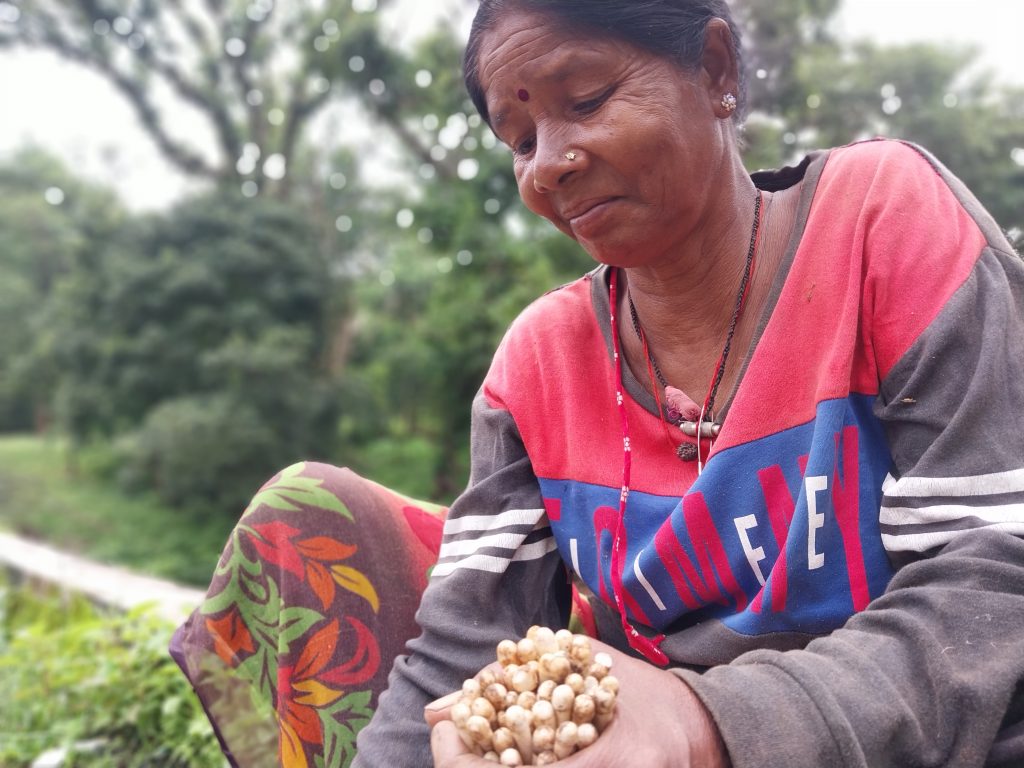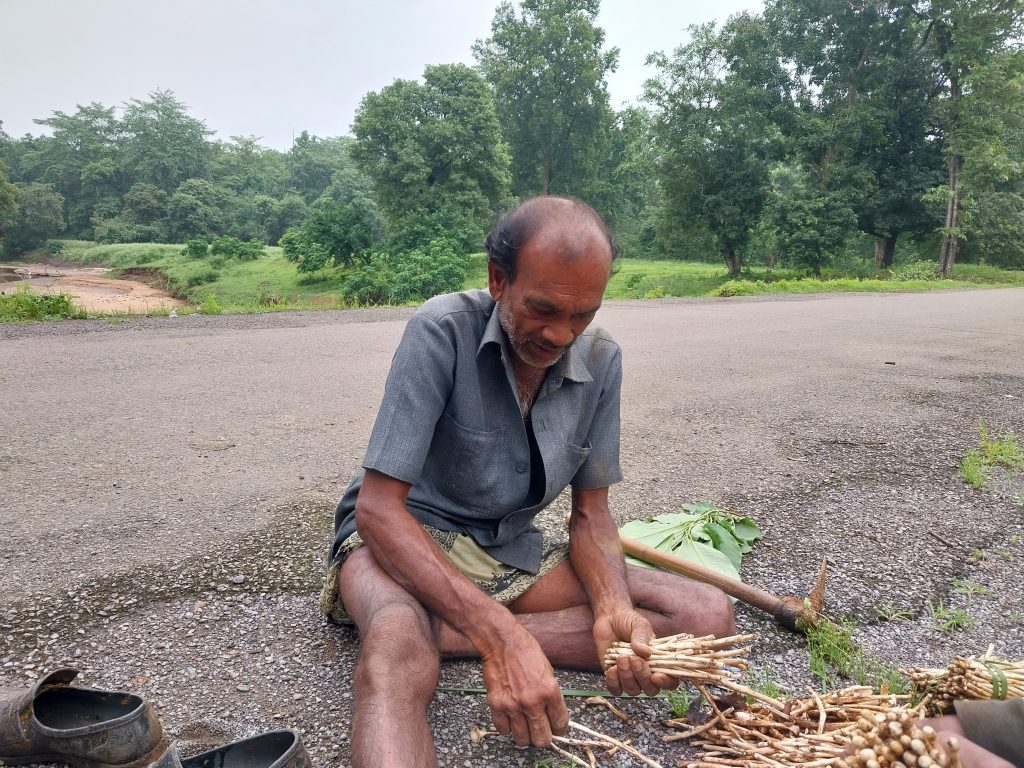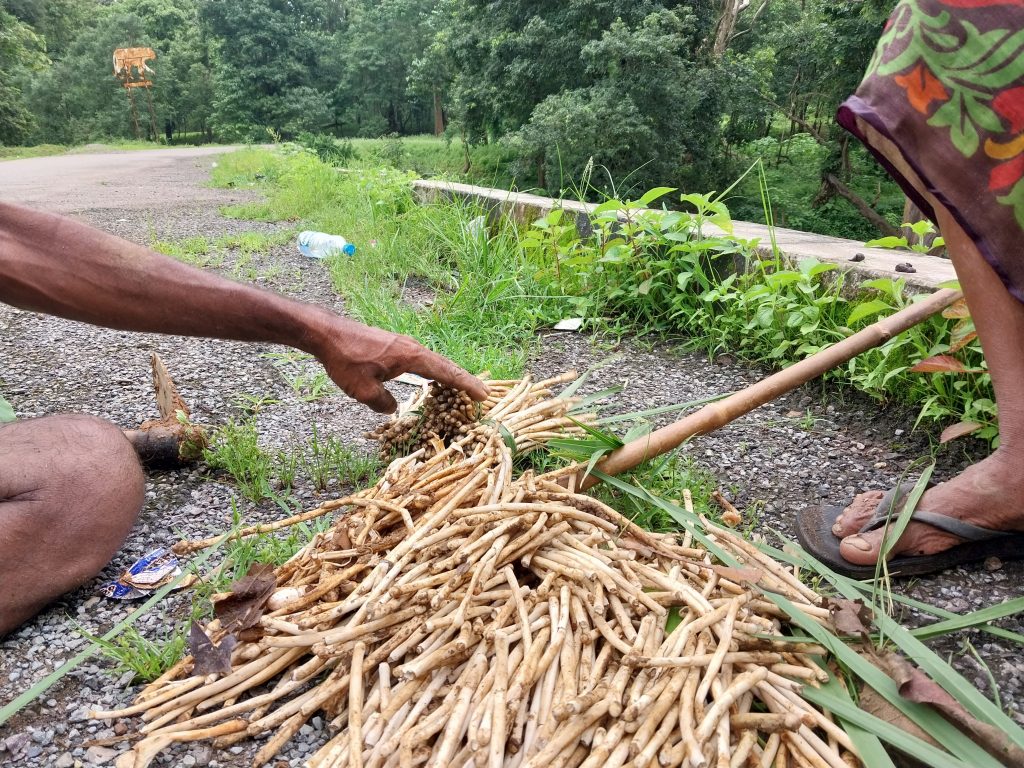
The Pihiri mushroom is enjoyed both fresh and also after being dried in the sun across Achanakmar. It is a seasonal produce. A report by Deepanwita Gita Niyogi
Sukhwara Bai, married to a Gond tribal man, is a resident of Achanakmar village inside the tiger reserve in Chhattisgarh bearing the same name. Bai collects the Pihiri mushroom during the peak monsoon season.
“When cooked, it is the most delicious thing ever tasted,” she said inside her tiny and dark room lit only by a solar light. Collecting the Pihiri is a difficult task as Bai has to enter deep inside the jungle and bear the combined attack of ants and mosquitoes on her arms and legs.
Still, it is so tasty that collecting it is worth the time and energy. Also, mushroom collection means cash for the economically deprived forest dwellers.
Inside the beautiful tiger reserve, the Pihiri found is of two types: the round one resembling a white flower and the elongated one having a slender tail-like structure. The second one is most sought after during the brief season of its appearance and is sometimes sold at Rs 700-1,200 per kg. The first one is found in bamboo thickets.
When you cook the long Pihiri as a dry sabzi without making it watery, it tastes heavenly, says Bai’s husband Purushottam Gond. But before cooking, it has to be washed and cleaned properly. To remove the soil and dirt, it is advisable to soak the Pihiri in water in any kind of container.
Selling seasonal items
On a cloudy morning, the couple was spotted selling Pihiri. Sprawled on the road, Bai promptly sold off her stuff collected at dawn. In the evening, she informed she had made Rs 600 that day by selling off almost 1.5 kg. “It was a long day. We went out at 4 am to scout for the mushroom inside the forest.”
In another village called Tilaidabra, Andhiyar Baiga and his wife Sukhri Baiga, do not own much land, but only two small plots for paddy. Thus, the couple depends on the forest for livelihood.
“I am afraid of elephants. In a moment, they can damage crops and houses. Still during the monsoon, I go inside the jungle for the Pihiri. Sometimes, it is a long walk,” the Adivasi man said. To supplement his income, he also makes bamboo broomsticks and sells them at Rs 10-12 per piece to traders who come from Kota, 40 km away. They come twice a week.
The Pihiri is enjoyed both fresh and also after being dried in the sun. While it is common to spot activities around the buying and selling of Pihiri inside Achanakmar’s villages, at one house, a man was seen making a bamboo structure locally called the chalni.
This is used to roast the mushrooms inside rooms by lighting a fire at the bottom. When roasted in the fire they last for months. On completion, the structure resembles a machan for growing vegetables which need support.
At a forest check post, two Adivasi men smile as they get clicked with the Pihiri. One, a resident of Achanakmar village, scouted for the elongated mushrooms after rains flattened an anthill nearby his village
Food of the forest
Bindawal village resident Kheluram Sakat says the slender Pihiri, which is costlier than the round one, is found on anthills after they are damaged due to rains and lie flat on the ground. “There is even a longer one called Rajbhoru Pihiri locally. Pihiri is so tasty that even mutton fails. Once, the rates touched Rs 3,000 per kg.”

At the end of the day, when rains fell like cats and dogs, a Baiga Adivasi family cooked the Pihiri and enjoyed it with rice in Barighat village of the reserve.
It tastes best when cooked lightly, said Arjun Baiga of Tilaidabra village as he packed off some for the reporter. “It won’t harm you at all as it is natural and nutritious.”

Geetanjali Singh, assistant professor of Botany department at the Dr. Shyama Prasad Mukherjee University in Ranchi, said she looks after taxonomy. Singh has been working on mushrooms and trying to identify them for the past five years. Many such mushrooms are consumed by the tribal communities. “Some mushrooms have been identified wrongly also. But it is very important to classify them correctly.”
Mushroom collection is part of the traditional knowledge system which the tribal communities have learnt over centuries. Two tribal forest guides in Kanha Tiger Reserve said they know which mushrooms to collect for consumption.











